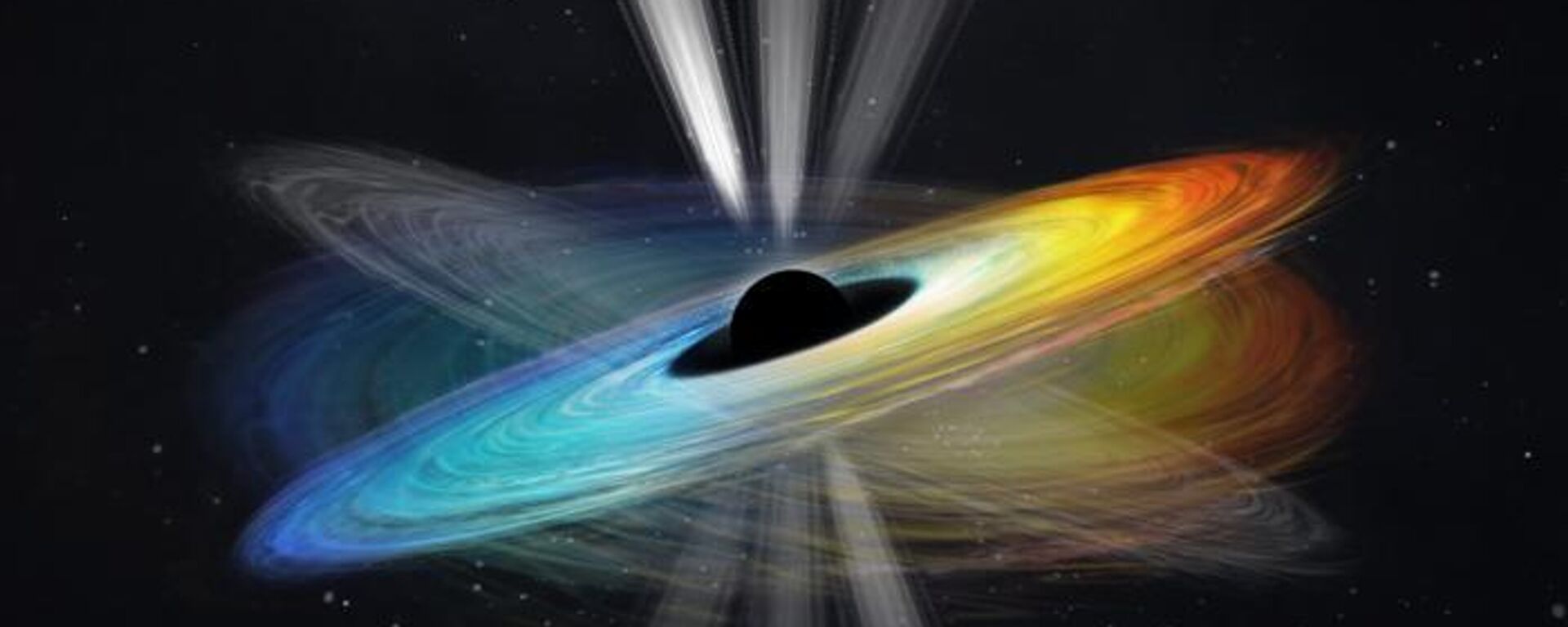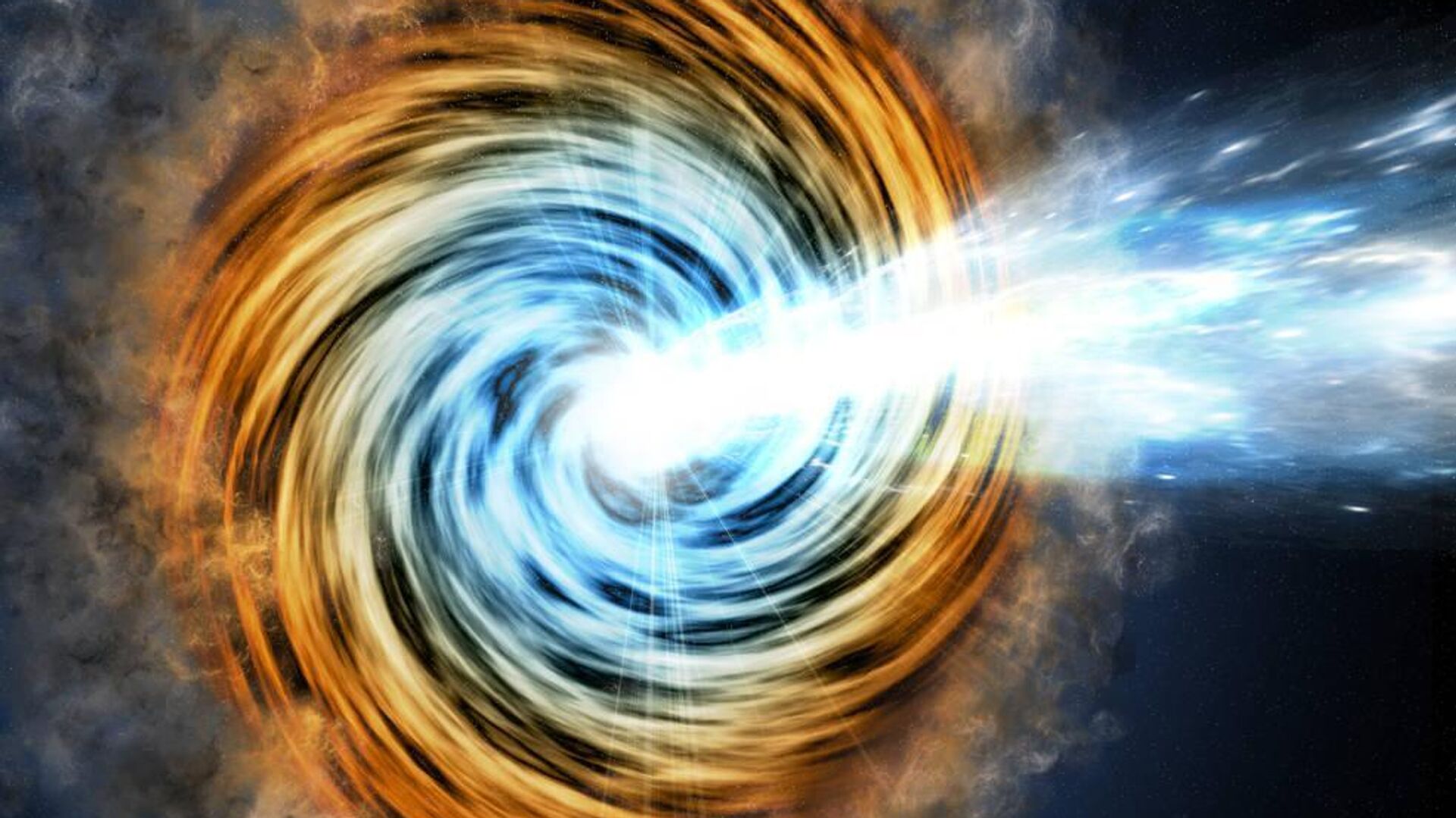https://sputnikglobe.com/20231006/hubble-discovery-of-new-fast-blue-optical-transient-poses-more-questions-than-it-answers-1113991988.html
Hubble Discovery of New Fast Blue Optical Transient ‘Poses More Questions Than it Answers’
Hubble Discovery of New Fast Blue Optical Transient ‘Poses More Questions Than it Answers’
Sputnik International
The recent discovery of a Luminous Fast Blue Optical Transients (LFBOT) far from where the mysterious events have so far been located has left astronomers with more questions than answers.
2023-10-06T20:30+0000
2023-10-06T20:30+0000
2023-10-06T20:26+0000
beyond politics
palomar observatory
hubble space telescope
supernova
astronomy
gamma ray bursts
https://cdn1.img.sputnikglobe.com/img/07e6/0b/18/1104661603_0:92:985:646_1920x0_80_0_0_0a66d6b770e46ab2e4d37de37007e3bd.jpg
On April 10, the Zwicky Transient Facility at Palomar Observatory in California detected an LFBOT designated AT2023fhn but nicknamed “The Finch,” following an eclectic naming pattern scientists have adopted for the confusing phenomena.LFBOTs are kind of like supernovas or gamma ray bursts, but they’re much brighter than supernovae and they shine in bright blue light and also emit a lot of radio waves, ultraviolet rays, and x-rays, but not much else. They also only last for a few days, whereas supernovae typically last for weeks or months.During the brief time The Finch stuck around, it was also observed by the Gemini South telescope in Chile, the Very Large Array radio telescope, and the Hubble Space Telescope and Chandra X-ray Observatory in Earth orbit. Gemini was able to tell through spectral analysis that The Finch was about 20,000 degrees Celsius, well short of a supernova or even of a massive star but much hotter than our sun, for example. The light’s red-shift showed it occurred about 3 billion light-years away, which is why the Hubble’s massive eye was called on to check it out.Ashley Chrimes, a research fellow at the European Space Agency, is the lead author of a new paper describing the mystery, which was accepted for publication in the Monthly Notices of the Royal Astronomical Society journal and released on the preprint server arXiv."The more we learn about LFBOTs, the more they surprise us," Chrimes said in a statement. "We've shown that LFBOTs can occur a long way from the center of the nearest galaxy, and the location of the Finch is not what we expect for any kind of supernova."Some theories floated in the news release are that LFBOTs could be the result of stars being torn apart by intermediate-mass black holes, or could be the result of a collision between two neutron stars in which one of them was a magnetar.Officials noted the James Webb Space Telescope (JSWT), another space-based observatory with a far more powerful lens than the Hubble, could be used to look at The Finch’s location with much greater scrutiny. The scientists stated that JWST might find it occurred in a globular cluster in the outer halo of one of the nearby galaxies, which is the most likely place to find intermediate-mass black holes, too.
https://sputnikglobe.com/20230930/astronomers-obtain-first-ever-evidence-of-m87-black-hole-rotation-1113815236.html
Sputnik International
feedback@sputniknews.com
+74956456601
MIA „Rossiya Segodnya“
2023
News
en_EN
Sputnik International
feedback@sputniknews.com
+74956456601
MIA „Rossiya Segodnya“
Sputnik International
feedback@sputniknews.com
+74956456601
MIA „Rossiya Segodnya“
hubble space telescope; luminous fast blue optical transient; supernova
hubble space telescope; luminous fast blue optical transient; supernova
Hubble Discovery of New Fast Blue Optical Transient ‘Poses More Questions Than it Answers’
The recent discovery of a Luminous Fast Blue Optical Transients (LFBOT) far from where the mysterious events have so far been located has left astronomers with more questions than answers.
On April 10, the Zwicky Transient Facility at Palomar Observatory in California detected an LFBOT designated AT2023fhn but nicknamed “The Finch,” following an eclectic naming pattern scientists have adopted for the confusing phenomena.
LFBOTs are kind of like supernovas or gamma ray bursts, but they’re much brighter than supernovae and they shine in bright blue light and also emit a lot of radio waves, ultraviolet rays, and x-rays, but not much else. They also only last for a few days, whereas supernovae typically last for weeks or months.
The first one was detected in 2018 and nicknamed “The Cow,” and only a handful have been seen since, each being given whimsical animal nicknames.
During the brief time The Finch stuck around, it was also observed by the Gemini South telescope in Chile, the Very Large Array radio telescope, and the Hubble Space Telescope and Chandra X-ray Observatory in Earth orbit.
Gemini was able to tell through spectral analysis that The Finch was about 20,000 degrees Celsius, well short of a supernova or even of a massive star but much hotter than our sun, for example. The light’s red-shift showed it occurred about 3 billion light-years away, which is why the Hubble’s massive eye was called on to check it out.

30 September 2023, 04:07 GMT
Until this point, LFBOTs had been associated with galaxies, but what Hubble found was astounding: The Finch was in intergalactic space, about 50,000 light-years from one large galaxy and 15,000 light-years from another smaller one.
Ashley Chrimes, a research fellow at the European Space Agency, is the lead author of a new paper describing the mystery, which was accepted for publication in the Monthly Notices of the Royal Astronomical Society journal and released on the
preprint server arXiv.
"The more we learn about LFBOTs, the more they surprise us," Chrimes said in a
statement. "We've shown that LFBOTs can occur a long way from the center of the nearest galaxy, and the location of the Finch is not what we expect for any kind of supernova."
“The discovery poses many more questions than it answers,” Chrimes added. “More work is needed to figure out which of the many possible explanations is the right one.”
Some theories floated in the news release are that LFBOTs could be the result of stars being torn apart by intermediate-mass black holes, or could be the result of a collision between two neutron stars in which one of them was a magnetar.
Officials noted the James Webb Space Telescope (JSWT), another space-based observatory with a far more powerful lens than the Hubble, could be used to look at The Finch’s location with much greater scrutiny. The scientists stated that JWST might find it occurred in a globular cluster in the outer halo of one of the nearby galaxies, which is the most likely place to find intermediate-mass black holes, too.



